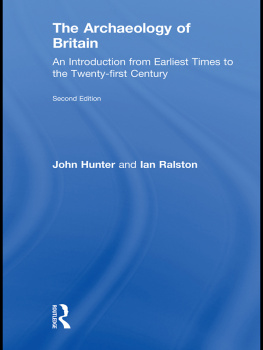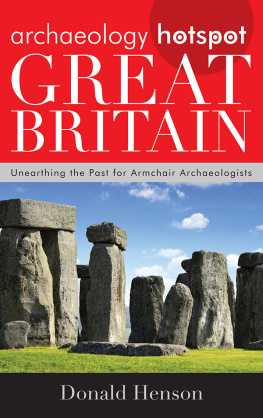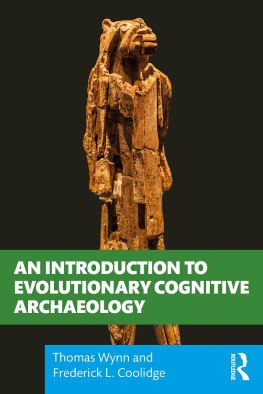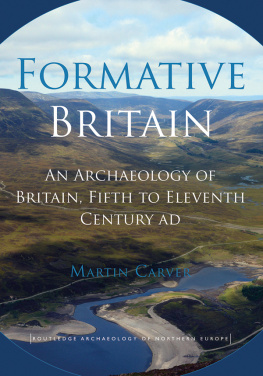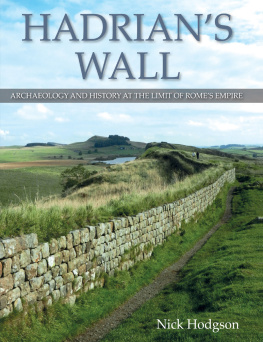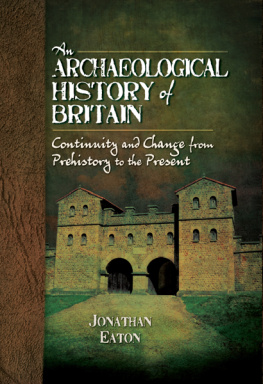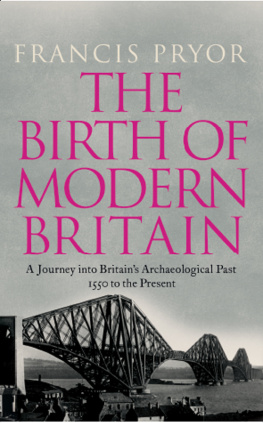THE ARCHAEOLOGY OF BRITAIN
Second Edition
The Archaeology of Britain is the only concise and up-to-date introduction to the archaeological record of Britain from the reoccupation of the landmass by Homo sapiens during the later stages of the most recent Ice Age until last century. This fully revised second edition extends its coverage, with greater detail on the first millennium AD beyond the Anglo-Saxon domain, and turning to recent times to look at the archaeology of contemporary society, including the Cold War.
The chapters are written by experts in their respective fields. Each is geared to provide an authoritative but accessible introduction, supported by numerous illustrations of key sites and finds and a selective reference list to aid study in greater depth. It provides a one-stop textbook for the entire archaeology of Britain and reflects the most recent developments in archaeology both as a field subject an as an academic discipline.
No other book provides such comprehensive coverage, with such a wide chronological range, of the archaeology of Britain. This collection is essential reading for undergraduates in archaeology and all those interested in British archaeology, history and geography.
John Hunter is Professor of Ancient History and Archaeology at the University of Birmingham. He specializes in Scottish archaeology, particularly in the Northern and Western Isles. He has published several books, including Fair Isle, the archaeology of an island community, and a major excavation monograph on multiperiod excavations on the island of Sanday, Orkney.
Ian Ralston is Professor of Later European Prehistory at the University of Edinburgh. His research interests include Scottish archaeology (notably its later prehistory), the temperate European Iron Age and applied archaeology. His recent books include Celtic fortification, Angus: archaeology and history (with Andrew Dunwell) and Un complexe princier de lge du Fer (with Laurence Augier and Olivier Buchsenschutz).
THE ARCHAEOLOGY OF BRITAIN
An Introduction from Earliest Times to the Twenty-First Century
Second Edition
Edited by John Hunter and Ian Ralston

LONDON AND NEW YORK
First published 1999
by Routledge
Reprinted in 1999, 2000, 2001, 2002, 2003, 2005, 2006
This second edition published in 2009
2 Park Square, Milton Park, Abingdon, Oxon OX14 4RN
Simultaneously published in the USA and Canada
by Routledge
270 Madison Ave, New York, NY 10016
Routledge is an imprint of the Taylor & Francis Group, an informa business
This edition published in the Taylor & Francis e-Library, 2009.
To purchase your own copy of this or any of Taylor & Francis or Routledges collection of thousands of eBooks please go to www.eBookstore.tandf.co.uk.
1999 and 2009 for selection and editorial matter;
individual chapters, their contributors
All rights reserved. No part of this book may be reprinted or reproduced or utilised in
any form or by any electronic, mechanical, or other means, now known or hereafter
invented, including photocopying and recording, or in any information storage or
retrieval system, without permission in writing from the publishers.
British Library Cataloguing in Publication Data
A catalogue record for this book is available from the British Library
Library of Congress Cataloging in Publication Data
A catalog record for this book has been requested
ISBN 0-203-86195-7 Master e-book ISBN
ISBN 10: 0-415-47716-6 (hbk)
ISBN 10: 0-415-47717-4 (pbk)
ISBN 10: 0-203-86195-7 (ebk)
ISBN 13: 978-0-415-47716-1 (hbk)
ISBN 13: 978-0-415-47717-8 (pbk)
ISBN 13: 978-0-203-86195-0 (ebk)
Contents
IAN RALSTON AND
JOHN HUNTER
|
NICHOLAS BARTON
|
NICKY MILNER AND
STEVEN MITHEN
|
ALASDAIR WHITTLE
|
MIKE PARKER PEARSON
|
TIMOTHY CHAMPION
|
COLIN HASELGROVE
|
W.S. HANSON
|
SIMON ESMONDE CLEARY
|
CATHERINE HILLS
|
STEPHEN T. DRISCOLL
|
JULIAN D. RICHARDS
|
JOHN SCHOFIELD
|
ROBERTA GILCHRIST
|
PAUL STAMPER
|
IAN WHYTE
|
KATE CLARK AND
ELEANOR CONLIN CASELLA
|
JOHN SCHOFIELD
|
TIMOTHY DARVILL
|
Figures
1.1 | The recording of military monuments |
1.2 | Aerial photography as a major factor in increasing the number of known sites |
1.3 | The development of urban archaeology |
2.1 | Comparison of ice accumulation rates and palaeotemperature |
2.2 | Creswellian artefacts from Three Holes Cave and Kents Cavern, Devon |
2.3 | Distribution of Late Upper Palaeolithic Creswellian findspot |
2.4 | Reindeer baton from Goughs Cave |
2.5 | Modelled radiocarbon determinations from Goughs Cave, Avelines Hole, Sun Hole and Pixies Hole |
2.6 | Cut-marks on a human skull from Goughs Cave |
2.7 | Distribution of Federmesser sites with affinities to Hengistbur Head sites |
2.8 | Retouched tools from Nea Farm |
2.9 | Final Upper Palaeolithic Federmesser artefacts |
2.10 | Distribution of Final Upper Palaeolithic Federmesser findspot |
2.11 | Distribution of long blade findspots with bruised blade |
2.12 | Long blade artefacts |
3.1 | Location of Mesolithic sites mentioned in text |
3.2 | Pollen diagram from Star Carr illustrating vegetation change |
3.3 | Changes in sea-level of the North Sea in the Early Holocene |
3.4 | Chipped stone artefacts from Star Carr and Kinloch, Rum 9 |
3.5 | Organic and coarse stone artefacts from Mesolithic sites |
3.6 | Non-utilitarian artefacts from Mesolithic sites |
3.7 | Excavations at Farm Fields, Rum |
3.8 | Excavations at Gleann Mor, Islay |
3.9 | Excavations of the hut at Mount Sandel |
4.1 | Plan of the major features of the Cotswold long barrow at Ascott-under-Wychwood |
4.2 | Probability distributions of dates relating to the construction and use of the barrow |
4.3 | Reconstruction of one of the phases of occupation at Loch Olabhat, North Uist |
4.4 | House 547 outside the south entrance to Durrington Walls |
4.5 | The primary burials in the Radley oval barrow, Oxfordshire |

